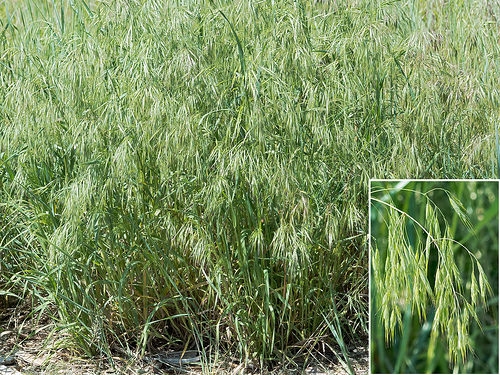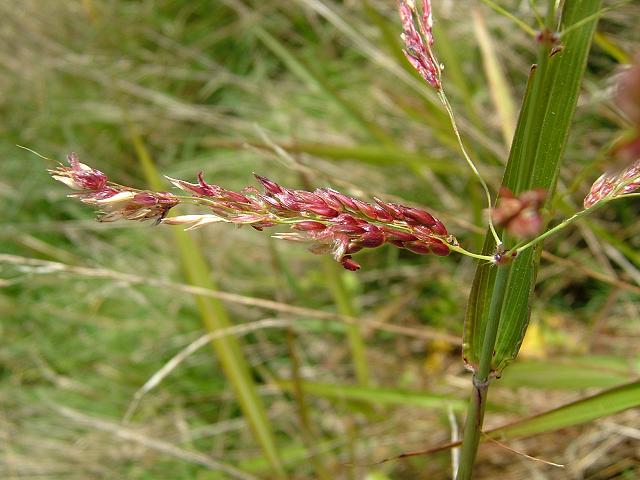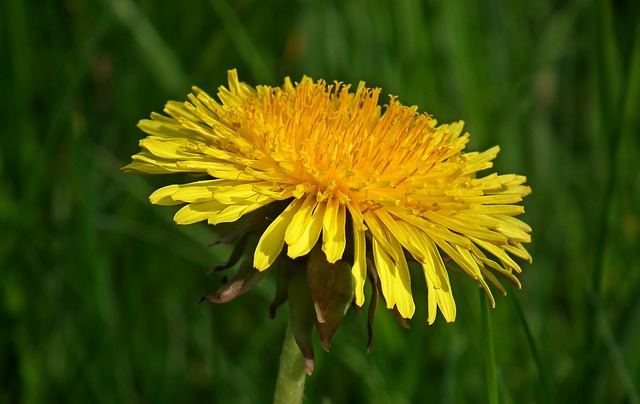The Definitive Guide to Identifying Common Lawn Weeds
BY EMALEY BAXTER | APRIL 24TH, 2019 | LAWN CAREHome and business owners across the country have one thing in common no matter their location, taking pride in a well-kept lawn and landscape. Part of that task almost always requires knowledge of what plants are wanted in our gardens and which are intruders. Some weeds are iconic like the thought of tumbleweeds blowing across the western United States, but most weeds found in our landscape are not as easily identifiable. Let’s take a moment to discuss how to best identify common lawn weeds and how to create healthy lawn care habits that will give your grassy areas a fighting chance against the toughest weeds.
First Things First: What is a Weed?
A Plant Out of Place. Weeds are known by everyone but are not always easily recognized. Let’s start by defining what exactly is a garden weed. Simply put a weed is just any plant that is ‘out of place’. While this definition could include desirable plants that have overgrown their intended boundaries, most commonly it is used to cover any plant that –
- Presents Difficulty In Cultivating Desirable Plants
- Has A Potential For Decreasing The Value Of Plant And Animal Products
- Causes Losses Through Increased Cultivation Or Harvesting Costs
- Presents A Hazard Of Poisoning People Or Animals
- Interferes With The Enjoyment Of Outdoor Recreation
- Destroys The Aesthetic Value Of Turf And Other Ornamental Plantings
What’s in a Name? There are two main types of weeds: broadleaf and grassy. Both of these can be difficult to treat as there are also subcategories: annual and perennial. The perennials are the most difficult to get rid of since they live the longest and keep returning year after year. Left unchecked, the annual varieties will continue to reproduce and spread across your property year after year as well. Additionally, there are often several common names for the same weed so photographic identification is most helpful.
How to identify lawn weeds that resemble grass
Grass Weed Types. Everyone knows about lawn weeds but the fact is that they are not always easily recognized. When grass-like weeds start to grow in poorly established grassy areas it can become very difficult to distinguish the desirable turf grass from the weeds. Here are just a few weed types that closely resemble grass and how to quickly identify them.
1. Cheatgrass (Bromus tectorum)

Cheatgrass lives up to its name in that when it is young from a distance it blends into a lawn so well that a homeowner might not realize it has started to take hold until it overruns the turfgrass. When looking to identify cheatgrass, look for leaves that branch out from the base of the plant. These leaves will often have a reddish color and the blades are flat and covered with soft hairs.
2. Johnsongrass (Sorghum halepense)

Yet another weed that too closely resembles lawn grass is Johnsongrass. It forms a thick, vigorously growing clump that can rapidly develop into large colonies spreading by their tough rhizomes. Its leaf blades are smooth and display a prominent white mid-rib down the center of each stem.
3. Crabgrass (Digitaria sanguinalis)

It is for good reason that most people are very familiar with crabgrass, it seems to grow everywhere! However, the good news is it is just as easy to prevent. Crabgrass is a warm-season annual grass, which means it sprouts from seed when temperatures rise in late spring and can continue to do so through the summer. It will then die when temperatures cool or with the first hard frost in the fall. This weed thrives on moist sites with plenty of sunlight and will quickly invade areas where your lawn is thinnest and especially along edges and sidewalks.
How to identify lawn weeds that resemble ground covers or flowering plants
Flowering Weed Types. Some common weed types produce their own flowers. But unlike the flowers cultivated for the gardening bed, these flowers grow from plants that are often quick spreading, have an unruly growth habit, have thorns and pickers, or other undesirable characteristics. The following examples of flowering weeds are examples of those traits.
1. Henbit Deadnettle (Lamium amplexicaule)

In some parts of the country, Henbit Deadnettle is considered a wildflower. However, it is a winter annual that blooms in early spring, especially in the south and south central states. Henbit leaves are finely hairy and rounded with notched edges. These leaves grow every inch or so on a square stem. The stems are weak so the longer the weed grows, the less stable its foundation is. It has purple flowers that grow at the very top of the plant.
2. Dandelion (Taraxacum)

Iconic due to its seed-head, the dandelion is easily recognizable. Coming from the French name dent de lion (lion’s tooth), the flower has a unique look. Children and adults alike enjoy blowing the seeds, so they take root in a lot of lawns. The leaves grow close to the ground in a star-shaped pattern. In bloom, the flower is yellow. You will usually see them in spring to early summer. They are a biennial or perennial bloom.
3. Thistle (Cirsium)

Thistle has a rapid growth rate and it can get very tall. If you don’t deal with it, it will grow several feet high and about a foot wide, taking up a bit of space in your lawn. When it’s young, it resembles a dandelion except that it’s purplish in color and the leaves have long spines on them. They also have hairy, jagged edges. Butterflies and other insects love this woolly biennial or perennial and will often eat from it.
How to defend your lawn against weeds
Now that we’ve identified a few of the most common weedy plants that grow in lawns across America, let’s talk about the wide option of eradication strategies available to homeowners.
1. Cultivate Healthy Soil
There are few lawn weeds that can establish themselves in healthy grass.
Therefore, the first line of defense is creating an environment that is good for your lawn and bad for weeds. Simple right? Well, actually it is! A good lawn starts with good soil. If you are starting your lawn from bare soil, such as what happens after new construction, be sure to till the top 4” of native soil before adding a high-quality organic compost to the top. This will ensure there is a little soil compaction as possible, one of the foundations to healthy soil no matter what the soil make up maybe.
Proper or improper soil preparation before a lawn is installed will have a huge impact on how a lawn looks, and the amount of money it takes to maintain the lawn for years to come. Proper lawn preparation before the turf is installed costs almost nothing compared to what it costs to correct something done wrong after the turf is installed. If you are trying to increase the health of a lawn that already has turf grass adding a ‘top dressing’ of organic compost mulch will help give your soil a boost of nutrients and therefore create a better growing environment for turf grass, not lawn weeds.
For a good source of information about turf grass and soil health visit www.redhenturf.com.
2. Commercially Available Organic Herbicides
There are many effective organic herbicides on the market and are widely available especially at the home improvement stores and nurseries. Look for application methods that allow you to control the distribution of the herbicide so that you do not unintentionally damage or kill your desirable plants that may be near the bunch of weeds.
3. DIY Organic Herbicides
For stubborn weeds use a mixture of white vinegar and orange oil as an organic herbicide. In a large bucket mix 1 gallon 10-20% white vinegar with 2 ounces of orange oil or cleanser containing d-limonene (available at garden centers and some large retailers) and 2 ounces of liquid dishwashing detergent. Stir well to combine. Then…
- Funnel the weed killer into a plastic spray bottle. Shake it well as you use it, as the orange oil will tend to separate. Drench all surfaces of the weed with the solution during the hottest part of a sunny day. The weed will show signs of distress or die completely within two to four days. Repeat after 2 days and reapply after rain.
- For year-long protection, give perennial weeds, such as dandelions, a good shot of the mixture in the spring before they have the chance to set seeds. Pick seed heads off and destroy them as they appear throughout the growing season. Don’t add them to your compost heap. Spray perennials with the herbicide in the fall to fully utilize the weed’s life cycle and send the material to the stems and roots to aid in killing the plants.
- Tightly stored in a glass jar, this weed killing mixture will last indefinitely.
Still have questions about lawn care? Visit our lawn care page for more information.